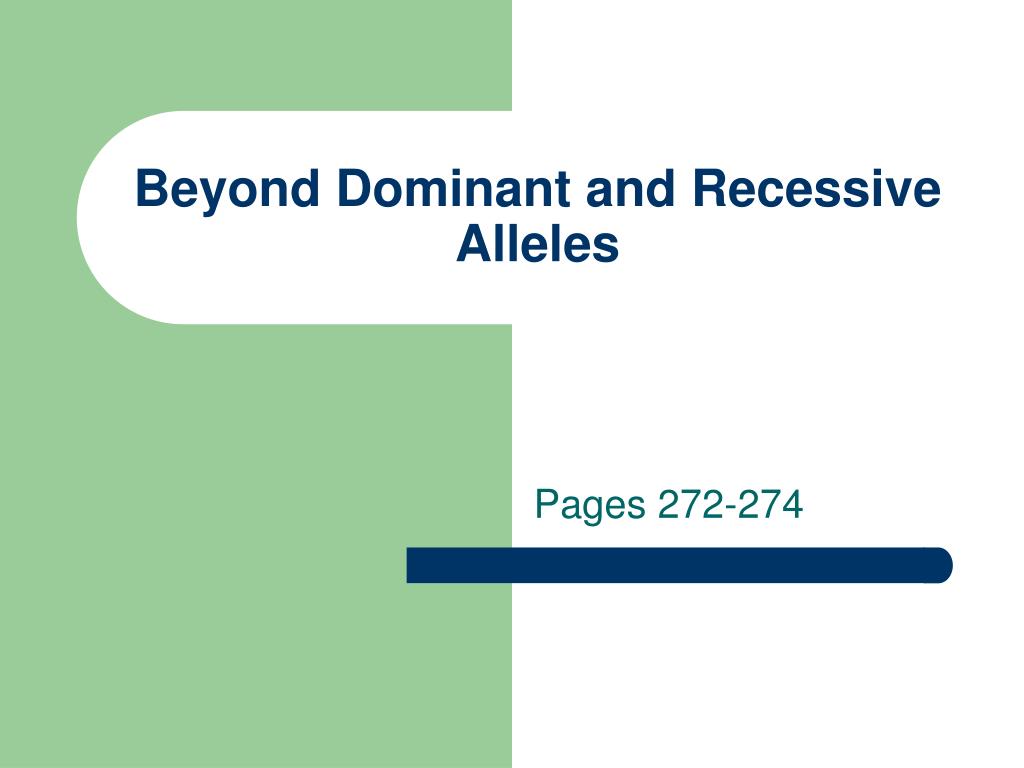
The dominant allele produces a certain phenotype (observable changes in physical characteristics).

Figure 1: Pedigree for earlobe attachment: free-hanging earlobe ( F) vs. So when one of the parents has a pair of free-hanging earlobes and the child also has the same earlobe trait, it means that the allele from that parent was dominant. The recessive allele that genetically determines the attached earlobe trait (recessive trait) will then be denoted by a small letter, which, in this example, is “ f“. As mentioned, the dominant allele is represented by a capital letter and so for this example, we will represent the dominant allele for the dominant trait, which is the free-hanging earlobe, with “ F“. And when one allele is dominant, the other is recessive. So when we say that the gene is dominant, it means that a particular allele is dominant. One allele comes from the mother and the other allele comes from the father. We have two gene variants for it - one allele that results in a detached earlobe trait and another allele for an attached earlobe trait. Let’s take for example the ear lobe trait. The same position keeps them paired with each other. The position of these copies of a gene (alleles) in a chromosome is the same (called locus). Mostly, there are at least two copies of each gene present in a chromosome. Not only on a molecular level, but the difference in proteins is also evident in the structural characteristics, such as structure, shape, and size, and physiological properties.Ī single chromosome may contain thousands of genes.

And so, a liver protein becomes different from a muscle protein and a kidney protein.
#Meaning of dominant traits code#
The code contains all the information about how the protein should develop, what should be its characteristics and properties. The genes bear the codes to produce proteins. These chromosomes contain thousands of genes. A monkey has 48 chromosomes an elephant has 56. Humans have a total of 46 chromosomes and of these 46, there are 23 pairs in total. The species that reproduce sexually have chromosomes in two pairs. Come and join us in our Forum: Incomplete dominance vs. The dominant allele is represented by a capital letter and the other that is recessive is represented by a lowercase letter. Thus, the allele that is expressed is regarded as the dominant allele whereas the allele that is not expressed is the recessive allele. The dominant gene variant (allele) expresses itself more strongly than the recessive gene variant (allele). In essence, when the gene determining a trait is heterozygous, meaning the alleles are not the same, one allele is dominant and the other is recessive. One of these laws is the Law of Dominance. Although he didn’t use the terms gene, allele, phenotype, etc., he introduced the principles that later founded the laws of Mendelian Inheritance. The concept of dominance was first introduced by G.J. (Miko, 2008) The term dominant, in this regard, however, refers to the relationship between alleles.Īlleles, by definition, are gene variants. When a gene is predominant in a population, meaning it is frequently transferred from one generation to another, it is described as dominant. Observable characteristics or traits are known as phenotype whereas the genetic factor determining the trait is referred to as the genotype. These traits are inherited from parents through a dominant allele. An autosomal recessive disorder means two copies of an abnormal gene must be present in order for the disease or trait to develop.In genetics, one can define dominant traits as the characteristics that appear in the next generation of a species. Simply so, what are examples of dominant and recessive disorders?Īutosomal recessive is one of several ways that a trait, disorder, or disease can be passed down through families. Some autosomal dominant traits that individuals may be familiar with are neourofibromitosis Type I, Huntington disease, and Marfan syndrome. Dominant means that you only need one copy of a mutation in order to be effective.

Examples of autosomal dominant disorders include Marfan syndrome and neurofibromatosis type 1.įurthermore, what is the genotype of autosomal dominant? Autosomal dominant refers to how a particular trait is inherited.

Dominant inheritance means an abnormal gene from one parent can cause disease. Hereof, what is an example of a dominant genetic disorder?Ī single abnormal gene on one of the first 22 nonsex (autosomal) chromosomes from either parent can cause an autosomal disorder. Examples of autosomal dominant diseases include Huntington disease, neurofibromatosis, and polycystic kidney disease.Ĭomplete answer to this is here. Autosomal dominant: A pattern of inheritance in which an affected individual has one copy of a mutant gene and one normal gene on a pair of autosomal chromosomes.


 0 kommentar(er)
0 kommentar(er)
